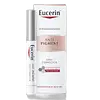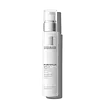What's inside
What's inside
 Key Ingredients
Key Ingredients

 Benefits
Benefits

 Concerns
Concerns

 Ingredients Side-by-side
Ingredients Side-by-side

Water
Skin ConditioningGlycerin
HumectantDimethicone
EmollientAlcohol Denat.
AntimicrobialNiacinamide
SmoothingIsopropyl Lauroyl Sarcosinate
Skin ConditioningOctyldodecanol
EmollientPEG-20 Methyl Glucose Sesquistearate
EmulsifyingDimethiconol
EmollientCetearyl Ethylhexanoate
EmollientIsohexadecane
EmollientSodium Hyaluronate
HumectantGinkgo Biloba Leaf Extract
Skin ConditioningPhenylethyl Resorcinol
AntioxidantPoloxamer 338
EmulsifyingAmmonium Polyacryloyldimethyl Taurate
Emulsion StabilisingDisodium EDTA
Isopropyl Myristate
EmollientCapryloyl Salicylic Acid
ExfoliatingXanthan Gum
EmulsifyingFerulic Acid
AntimicrobialPolysorbate 80
EmulsifyingAcrylamide/Sodium Acryloyldimethyltaurate Copolymer
Emulsion StabilisingPhenoxyethanol
PreservativeCI 77891
Cosmetic ColorantMica
Cosmetic ColorantParfum
MaskingWater, Glycerin, Dimethicone, Alcohol Denat., Niacinamide, Isopropyl Lauroyl Sarcosinate, Octyldodecanol, PEG-20 Methyl Glucose Sesquistearate, Dimethiconol, Cetearyl Ethylhexanoate, Isohexadecane, Sodium Hyaluronate, Ginkgo Biloba Leaf Extract, Phenylethyl Resorcinol, Poloxamer 338, Ammonium Polyacryloyldimethyl Taurate, Disodium EDTA, Isopropyl Myristate, Capryloyl Salicylic Acid, Xanthan Gum, Ferulic Acid, Polysorbate 80, Acrylamide/Sodium Acryloyldimethyltaurate Copolymer, Phenoxyethanol, CI 77891, Mica, Parfum
 Reviews
Reviews

Ingredients Explained
These ingredients are found in both products.
Ingredients higher up in an ingredient list are typically present in a larger amount.
Alcohol Denat. is an alcohol with a denaturant property. It is created by mixing ethanol with other additives.
This ingredient gets a bad rep because it is irritating and drying - mostly due to its astringent property. Astringents draw out natural oils in tissue, constricting pores and leaving your skin dried out.
However, alcohol denat. is not all that bad.
Due to its low molecular weight, alcohol denat. tends to evaporate quickly. One study on pig skin found half of applied alcohol evaporated in 10 seconds and less than 3% stayed on skin.
This also helps other ingredients become better absorbed upon application.
Studies are conflicted about whether this ingredient causes skin dehydration. One study from 2005 found adding emollients to propanol-based sanitizer decreased skin dryness and irritation. Another study found irritation only occurs if your skin is already damaged.
Small amounts of alcohol are generally tolerated by oily skin or people who live in humid environments.
The rule of thumb is if this alcohol is near the end of an ingredients list, it will probably not affect your skin much.
Also...
This ingredient has antimicrobial and solvent properties.
The antimicrobial property helps preserve products and increase their shelf life. As a solvent, it helps dissolve other ingredients.
Other types of astringent alcohols include:
Learn more about Alcohol Denat.Glycerin is already naturally found in your skin. It helps moisturize and protect your skin.
A study from 2016 found glycerin to be more effective as a humectant than AHAs and hyaluronic acid.
As a humectant, it helps the skin stay hydrated by pulling moisture to your skin. The low molecular weight of glycerin allows it to pull moisture into the deeper layers of your skin.
Hydrated skin improves your skin barrier; Your skin barrier helps protect against irritants and bacteria.
Glycerin has also been found to have antimicrobial and antiviral properties. Due to these properties, glycerin is often used in wound and burn treatments.
In cosmetics, glycerin is usually derived from plants such as soybean or palm. However, it can also be sourced from animals, such as tallow or animal fat.
This ingredient is organic, colorless, odorless, and non-toxic.
Glycerin is the name for this ingredient in American English. British English uses Glycerol/Glycerine.
Learn more about GlycerinWater. It's the most common cosmetic ingredient of all. You'll usually see it at the top of ingredient lists, meaning that it makes up the largest part of the product.
So why is it so popular? Water most often acts as a solvent - this means that it helps dissolve other ingredients into the formulation.
You'll also recognize water as that liquid we all need to stay alive. If you see this, drink a glass of water. Stay hydrated!
Learn more about Water